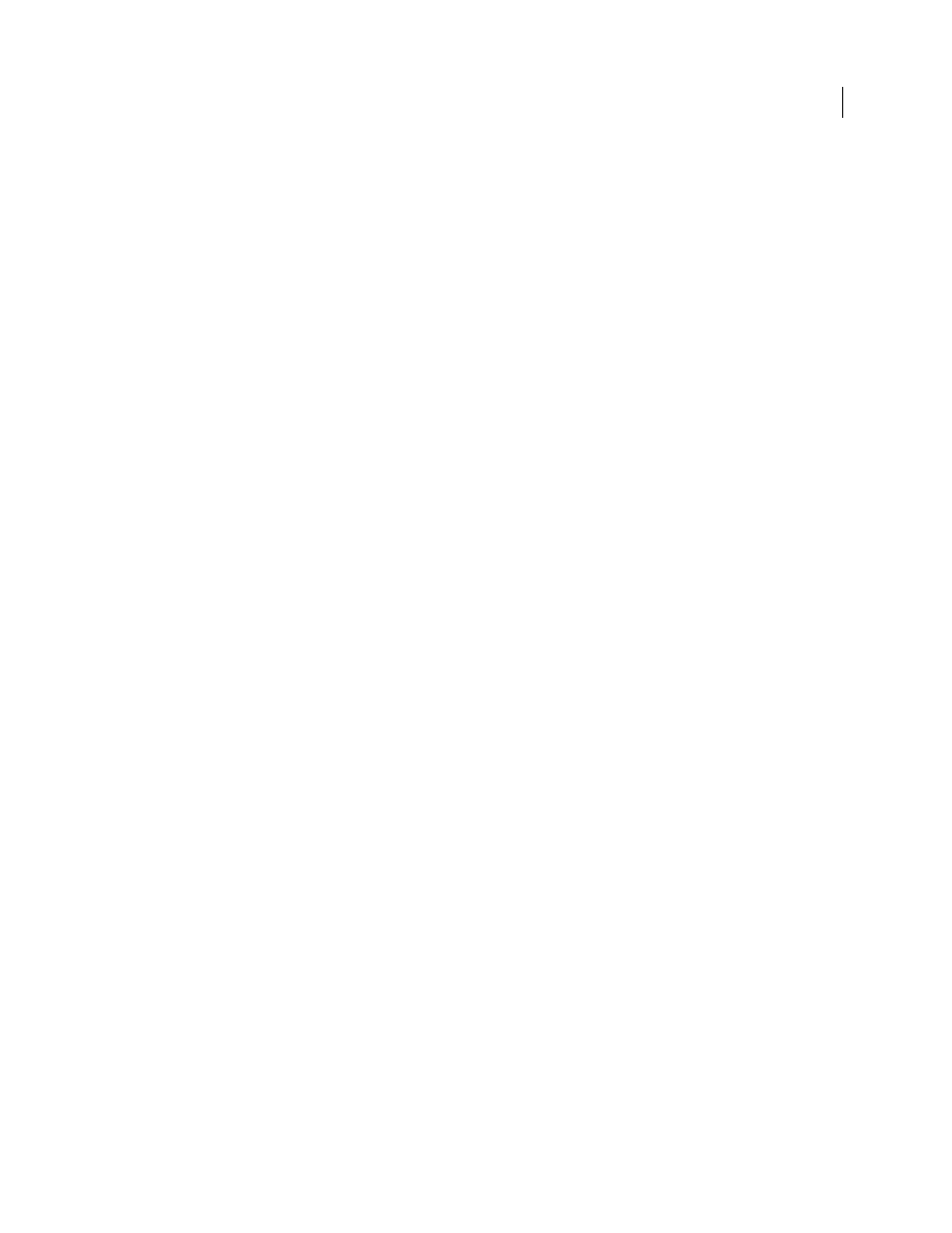How menu commands work – Adobe Extending Dreamweaver CS4 User Manual
Page 158

152
EXTENDING DREAMWEAVER CS4
Menus and menu commands
Delete a command you’ve created
1
Select Commands > Edit Command List.
A dialog box appears, listing all the commands you can delete. (Commands that are in the default Commands menu
don’t appear on this list and can’t be deleted using this approach.)
2
Select a command to delete.
3
Click Delete, and then confirm that you want to delete the command.
The command is deleted. The file that contains the code for the command is also deleted; deleting a command does
not simply remove the menu command from the menu. Be certain that you really want to delete the command
before you use this approach. If you want to remove it from the Commands menu without deleting the file, you can
find the file in Configuration/Commands and move it to another folder.
4
Click Close.
How menu commands work
When the user clicks a menu with a menu item that contains a menu command, the following events occur:
1
If any
menuitem
tag in the menu contains the
dynamic
attribute, Dreamweaver calls the
getDynamicContent()
function in the associated menu commands file to populate the menu.
2
Dreamweaver calls the
canAcceptCommand()
function in each menu commands file that is referenced in the menu
to check whether the command is appropriate for the selection.
•
If the
canAcceptCommand()
function returns a
false
value, the menu item is dimmed.
•
If the
canAcceptCommand()
function returns a
true
value or is not defined, Dreamweaver calls the
isCommandChecked()
function to determine whether to display a check mark next to the menu item. If the
isCommandChecked()
function is not defined, no check mark appears.
3
Dreamweaver calls the
setMenuText()
function to determine the text that should appear in the menu.
If the
setMenuText()
function is not defined, Dreamweaver uses the text that is specified in the
menuitem
tag.
4
The user selects an item from the menu.
5
Dreamweaver calls the
receiveArguments()
function, if defined, in the selected menu commands file to let the
command process any arguments that pass from the menu item.
Note: If it is a dynamic menu item, the ID of the menu item passes as the only argument.
6
Dreamweaver calls the
commandButtons()
function, if defined, to determine which buttons appear on the right
side of the Options dialog box and what code should execute when the user clicks the buttons.
7
Dreamweaver scans the menu commands file for a
form
tag.
•
If a form exists, Dreamweaver calls the
windowDimensions()
function to determine the size of the Options
dialog box that contains the
BODY
elements of the file.
•
If the
windowDimensions()
function is not defined, Dreamweaver automatically sizes the dialog box.
8
If the menu commands file’s
body
tag contains an
onLoad
handler, Dreamweaver executes the associated code
(whether or not a dialog box appears). If no dialog box appears, the remaining steps do not occur.
9
The user selects options in the dialog box. Dreamweaver executes event handlers that are associated with the fields
as the user encounters them.
10
The user clicks one of the buttons that are defined by the
commandButtons()
function.
11
Dreamweaver executes the code that is associated with the clicked button.
